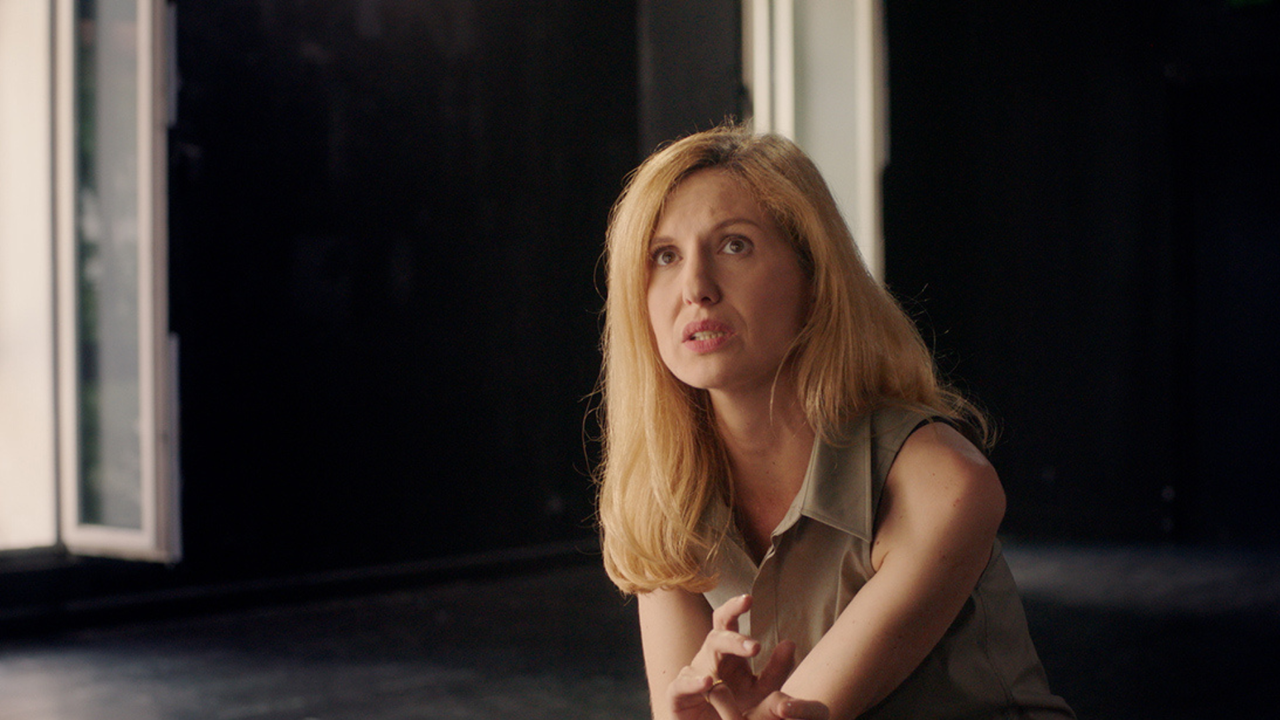- https://www.centraalmuseum.nl/en/exhibitions/to-watch-the-war-in-solidarity
- To Watch the War, in Solidarity
- 2023-09-22T00:00:00+02:00
- 2023-11-26T23:59:59+01:00
- In collaboration with BAK.
To Watch the War, in Solidarity is a part of a long-term series under the same title at BAK - basis voor actuele kunst. These exhibitions - which coincide with the renovation of the BAK building - are housed by fellow institutions in Utrecht. The video works Aphasia (Act Three) – A Kid from the Neighborhood (2019) by Jelena Jureša and Raw Footage (2006) by Aernout Mik can be seen in the Centraal Museum.
Aphasia (Act Three) – A Kid from the Neighborhood
In medicine, aphasia is the name for when someone is unable to find the right words or to speak at all. Under this title, Jelena Jureša’s three-part work addresses collective silence on the enduring historico-political crime complex at the intersection of Belgian colonialism, Austrian anti-Semitism, and the wars in former Yugoslavia. The work exposes the “banality of evil” (Hannah Arendt)—the racism and intolerance that has paved the way for state-sponsored violence—in the historical events that are not usually seen in relation but rather through the lens of history that conveniently compartmentalizes them. In this context, Aphasia is a call to break through societal indifferences about colonial violence and war atrocities, past and present, not the least because they are what, disturbingly, lie at the foundation of the European project.
“Act three” of the film project, presented here, mobilizes into the present the tragically infamous photograph from the war in Bosnia, in which a soldier is seen kicking the head of a dead Muslim woman killed by Serbian paramilitaries. The photograph is never shown in the film, rather it is animated in absentia through speech by journalist Barbara Matejčić and through choreography by dancer Ivana Jozić. Considering that this photograph, taken by photojournalist Ron Haviv, has been used as evidence in criminal prosecutions at the International Criminal Tribunal for the former Yugoslavia in The Hague, Jureša’s film appeals for the audience to think of the role of art and images of war as part of forensic pathways toward truth and justice.
Raw Footage
In Raw Footage, Aernout Mik works with documentary film material from the Yugoslav Wars (1991–2001) that he unearthed from the discarded media archives of Reuters and Independent Television News (ITN). These “war rushes”—though considered of no value for broadcast purposes due to their ordinary, repetitive, and non-dramatic nature—might touch upon some of the core paradoxes of war, namely, “how terrifying war is” and, at the same time, “how normal it becomes” (Susan Sontag). The way Mik edits the footage to be shown side by side on two adjacent screens demonstrates precisely how civilian life coexists with military reality and how the mundane entwines with that which is out of the ordinary: such as in the scenes in which an Olympic runner engages in a routine run across urban war ruins or when soldiers nap or joke wearing full military gear, with their weapons at the ready.
The work consists of multiple chapters, organized loosely around their visual affinities, be it children, animal stock, landscape and agricultural labor, or urban combat. Significantly, much of the imagery attests to the transformation of people and other-than-human subjects with the circumstances they endure, driven by yearning for life in spite of the conditions of the world.
Image: Jelena Jureša, Aphasia (Act Three) – A Kid from the Neighborhood (2019)
Collection in this exhibition
- No objects from the Centraal Museum collection were shown in this exhibition
Persistent url
To refer to this object please use the following persistent URL: https://hdl.handle.net/21.12130/exhibit.a5268ffc-bd7a-41ca-b493-2555c57917cd
Questions?
Do you have a remark or extra information on this exhibition? Please let us know!
